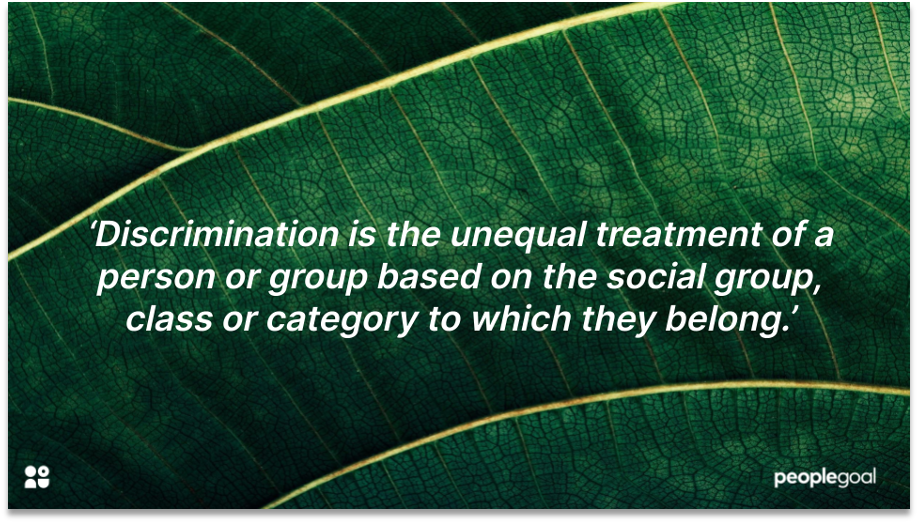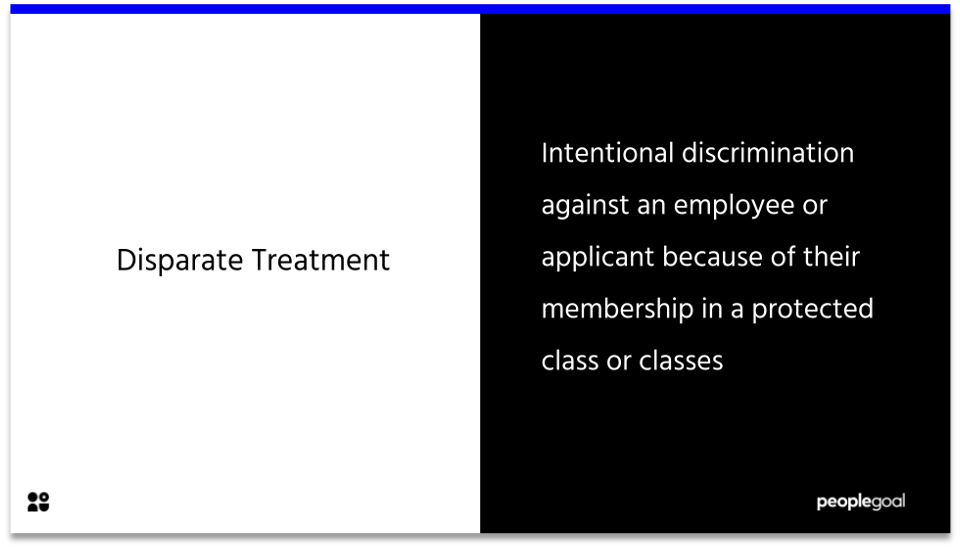Every organization has cultivated its own culture. The purpose of this is to enable all employees to understand and align with the unwritten workplace ethos. Organizational culture change can result in a variety of difficulties and grievances from leadership to the individual employee.
Why is Organizational Culture important?
Organizational culture is the values, attitudes, beliefs and behaviors that characterize an organization. The impression of company culture is to set a desired way of thinking and seeing the world. This can enable all individuals in a workforce to unify as group members in an organization. All sharing a mutual understanding of the company’s endeavors.
An organization’s mission statement is important for the alignment of all that forms a workforce.
The type of culture determines how employees interact at the workplace. A healthy workplace culture encourages more employee engagement and loyalty to management. Organizational cultures represent predefined policies that guide employees and gives them a sense of direction in the workplace.
For example, traditionally in corporate culture, there is a hierarchy culture. Defining status as the key determinant clearly communicates how decision-making processes must function. Those at a high level in a company pertaining the most clout, this power disseminates throughout the organization.
Organizational culture and leadership are strongly tied together. It is leaders who may first conceptualize the company culture.
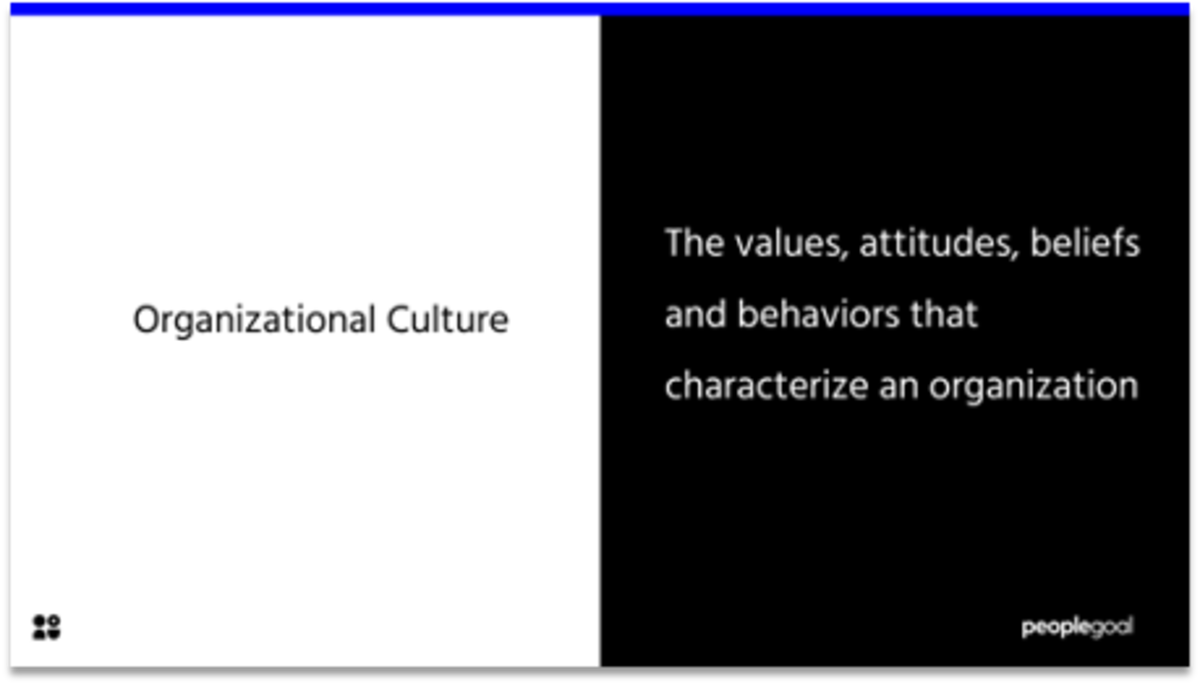
In a diverse workplace, the culture of an organization has the power to bring all employees onto a common platform. All employees must be treated equally and no one should feel neglected in the workplace. When employees feel welcome and adjusted to a company’s culture, they can deliver their best performance.
After all, it is the culture of the organization which extracts the best out of each team member. High performance from a workforce, implies a shared understanding and alignment with a strong culture.
Can Organizational Culture change?
People must first forget the old values, attitudes, beliefs and behaviors before learning the new one. Transitioning to a new culture can be a difficult process. For instance, as individuals might have invested several years of their life to following a set way of working.
Just as when teaching an old dog new tricks. It can be a struggle to ensure that employees don’t slip back into their previous routines and modes of work.
The difficulty of culture change is evidenced through a McKinsey study. It reports that according to a survey of almost 3000 executives – the failure rate of enterprise transformation is roughly 70%. Nevertheless, as the remaining 40% prove organizational culture change is possible. Through systematic approaches such as change management, companies can succeed in transforming organizational goals, values and processes.
It is crucial to consider the impact organizational culture change will have on the workforce. Human resources departments can step in to assist in easing this transition to a new culture. They can emphasize the importance of recognizing and considering the reaction of employees to such changes.
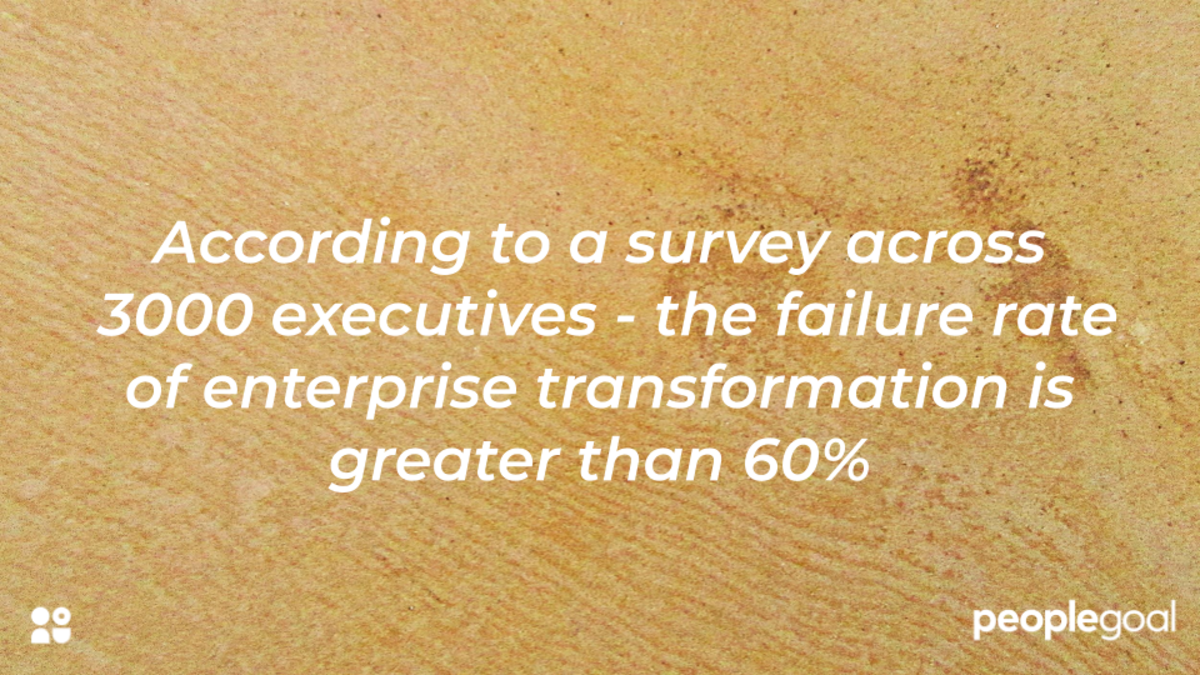
How do you measure Organizational Culture change?
Measuring change is good culture management. Using accurate measurementswill enable you to develop confidence that the investment in culture is making progress towards the desired outcomes. By specifying the precise qualities and intentions for the new culture, it is easier to monitor their efficacy. Leaders and other individuals responsible for inciting change are to be held accountable.
Culture change can be tracked through aspects such as the assessment of organizational behaviors of team members. This alongside other company culture traits relevant to the organization. Culture change tends to be administered through top-down methodologies. In this regard, it is then beneficial to measure the adoption of change from a bottom-up perspective. When junior employees are committed to following the latest values, it demonstrates effective change management.
The most explicit method to gather employee feedback towards types of organizational changecan be attained through surveys. For example, a weekly pulse survey would present an immediate indication of how the workforce has received the change. Prompt individuals to share their opinions on the company, their experience of work and their interpretation of the company culture. Additionally, as pulse surveys are regular, it becomes easier to gauge how successful alterations and techniques are for encouraging change.
5 Examples of Organizational Culture Change
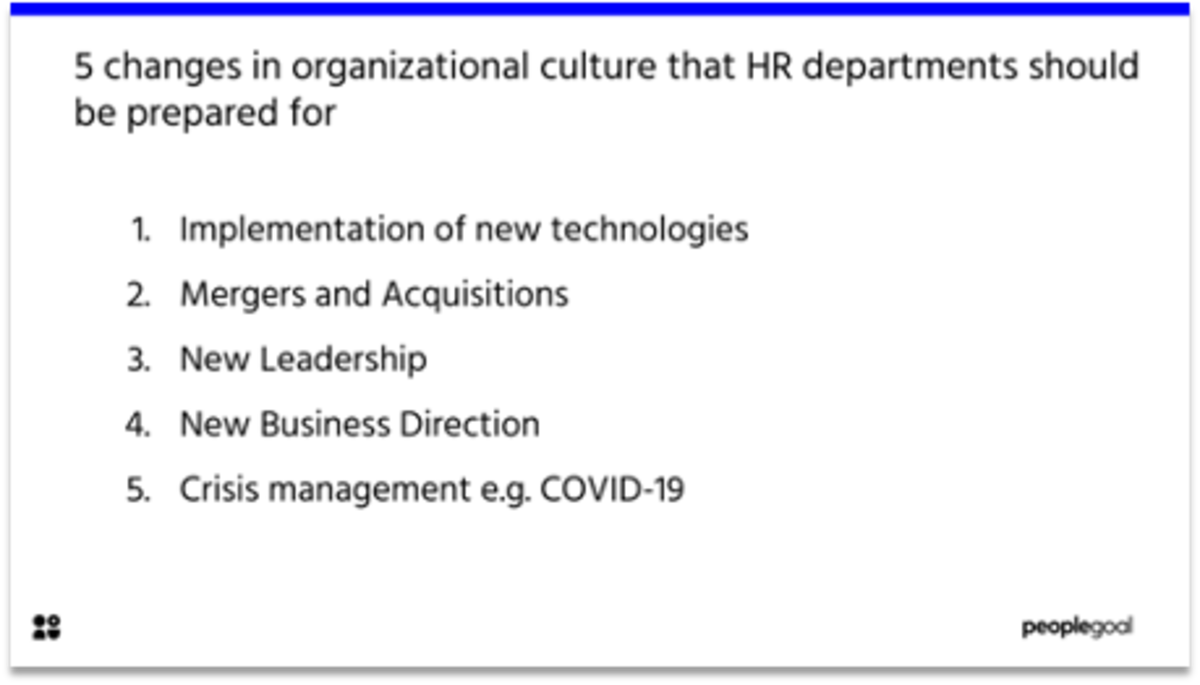
1. Implementation of new technologies
The world of work is becoming increasingly digitalized and cloud-based software solutions are growing in popularity. Consequently, the way people do work must change with the evolution of technology. So that employees can keep up with this continuously changing environment, HR departments have turned to an agile approach.
In a nutshell, agile HR is the quality of having a fluid and trusted network. It permeates an ability to adapt and evolve people and processes, as and when is necessary. The current rise of data fundamentalism is leading many organizations to prioritize the numbers over anything else. There is a growing trend of a shift towards an emphasis on data analysis.
The ability to interpret data sheets and the use of applications based on quantifying results is increasingly expected of employees. The purpose of agile HR is to assist employees in their learning and development. It also ensures that the new expectations put on the workforce are surmountable. As organizations invest greater interest in data analysis, the workforce must also be able to meet demands.
2. Mergers and Acquisitions
Mergers and acquisitions can often be difficult moments for organizations to align employees under a unified culture. Each organization has its own values and beliefs. As new fleets of workers start working together this can lead to conflicting understandings of how to approach work.
By considering how teams will relate to each other differently after a merger, HR departments can look to bridge the gaps and create more transparency between teams and individuals. Whilst competition is healthy, there is no need for employees to feel as though the enemy rests within the same organization. Team building exercises quickly after a merger takes place can help in forming healthy and positive relationships.
Avoid creating a complex network of teams that might feel almost like a clan culture Instead develop company structures can be reformed to represent a more fluid, project-based model. By counteracting the formation of a dominant culture, mergers and acquisitions present an opportunity to create an entirely new company culture.
Taking on the stronger aspects of each culture and cultivating a newly unified workforce will put everyone on a level platform. Whilst short term this might present some difficulties, in the long term this will prove beneficial for all involved. This will also facilitate better customer service as employees feel closer to the organizational culture.
3. New Leadership
At any point when the leadership makes an external change, there might be a call to reform the company culture. Often a new leader has their own fresh ideas about prioritizing a particular aspect of the process. This may have previously been overlooked. When leadership wants to change the values and attitudes of workers, they must ensure that their story is clear and agreeable.
For employees to begin changing their understanding of work, they must be presented with an approachable and attractive cause to motivate change. Following that, the management of this new perception of the company is disseminated through the managers’ handling of employees. HR departments can assist here by enabling managers to take a team-based approach. By equipping managers and leaders with the right tools, they can develop their team’s understandings of the new culture.
When it comes to enacting successful change, human resources departments must identify what leadership roles affect cultural change. By identifying what roles are correlated with the change, it will become more evident which individuals should be involved to create and execute effective strategies for enacting change. Managers shouldn’t be left to their own devices when it comes to creating and establishing initiatives. HR must be invested in these strategies to help document them and encourage employees to adhere to the new normal.
4. New Business Direction
The risks of changing business direction are high. Typically an organization will look to slightly tweak its business model. Yet, in some circumstances, it can necessary to undergo a complete re-positioning. Nonetheless, the process of change is fairly similar to establishing new leadership.
To create a culture, an organization must find a system of beliefs that can be supported by the entire workforce.
For a company to completely reconfigure its business strategy, this calls for a reassessment of the company’s values and beliefs. An organization can make a change that guides employees on a clear path. A path that enables them to easily understand the new culture. Whilst also promoting a successful turn in business strategy that can lead to a competitive advantage.
For the human resources department, the goal is to make this transition as smooth and seamless as possible. A more transparent environment will enable leaders and managers to more easily communicate the change to the rest of the workforce. The new approach of the organization can be designed with consideration for these lessons from the past.
5. Crisis management e.g. COVID-19
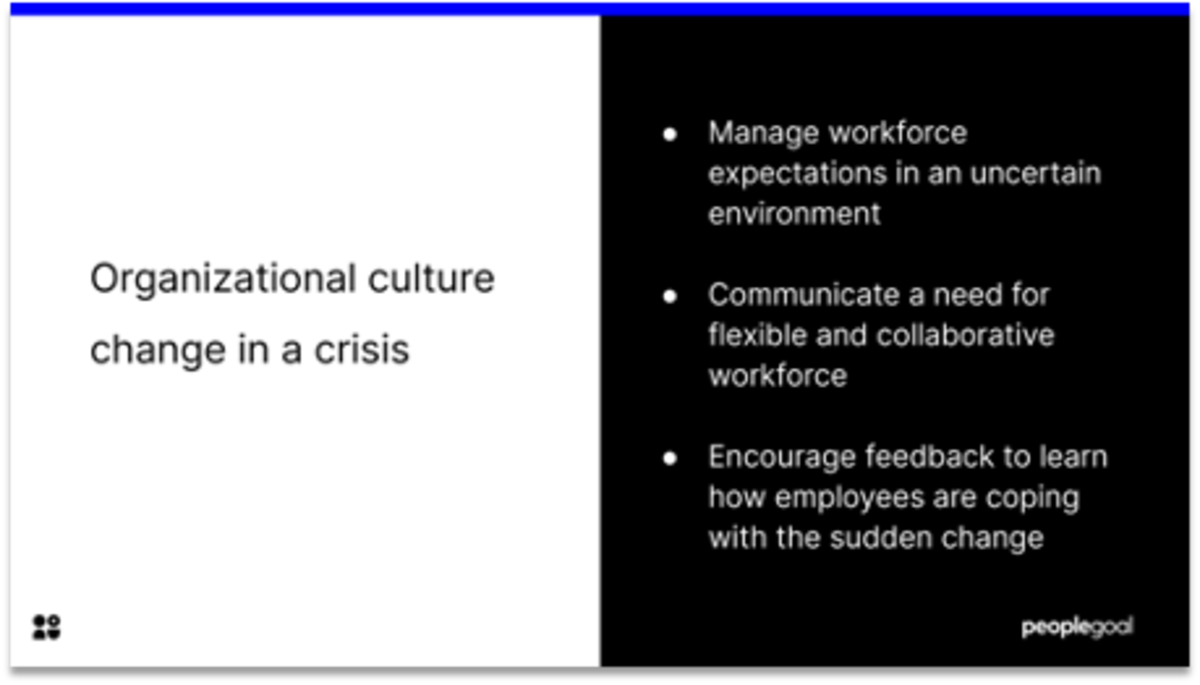
Crises are not a common occurrence for many organizations to have to deal with. Yet, as COVID-19 has demonstrated, there really is no predicting when and how they might affect us. In a crisis, an organization cannot continue to run its traditional processes and so this causes a change in organizational culture. With the turn to remote working, the social intimacy of an organization can be tested.
It is important for an HR department to explain the uncertainty of the situation. Communicating to employees that they must be flexible and collaborative is important for all. In times of a crisis, organizational culture must adapt to short-term needs. The most important values and processes must be prioritized to ensure survival.
Human resources management can contribute to shifting perspectives of the changing workforce. Promoting an appreciation for the new opportunities presented by remote working or the new modes of work conducted by employees. It is important to encourage feedback to ensure that employees don’t feel forgotten at times of a crisis. The bottom line is that employee motivation is reliant on the organizational culture.
Ready to 3x Your Teams' Performance?
Use the best performance management software to align goals, track progress, and boost employee engagement.


